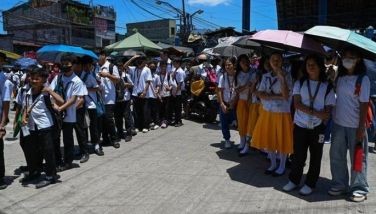Pinoys urged to be open on use of nuclear power
Science and Technology Secretary Estrella Alabastro said whatever decision the country makes regarding plans to go nuclear “should be based on a thorough study of risks vis-a-vis benefits.”
“We should consider (the) inclusion of nuclear power to diversify our energy mix,” Alabastro told The STAR. She said that if the government decides to go nuclear, the Department of Science and Technology, through the Philippine Nuclear Research Institute (PNRI), would see to it that international standards are followed.
Pangasinan Rep. Mark Cojuangco’s House Bill No. 4631 seeking the rehabilitation of the mothballed Bataan Nuclear Power Plant (BNPP) has touched off debates on the viability and safety of nuclear energy.
US-based Filipino scientist Dr. Kelvin Rodolfo earlier said that the BNPP sits on Mt. Natib, a dormant volcano that encompasses the entire northern half of the Bataan Peninsula.
Rodolfo said a study he conducted with other Filipino scientists in 2005 showed that Mt. Natib, Mt. Pinatubo, and Mt. Mariveles “owe their existence to the same geological line” and thus are “not exactly dissimilar in behavior.” Mt. Pinatubo had a major eruption in 1991.
The National Power Corp. and Korea Electric Power Corp. signed late last year a memorandum of understanding for a feasibility study on the possible activation of the power plant.
Alabastro said the government has funded the development of human resources in nuclear engineering to create a corps of nuclear scientists and technical experts who would study various aspects of nuclear power plant operations.
Construction of the BNPP began in 1976 during the Marcos regime at the height of an energy crisis.
The power plant was mothballed in 1986 after international experts declared it “unsafe and inoperable” as it was built near major earthquake fault lines and close to dormant volcanoes. It never produced a single watt of electricity.
The plant is presently valued at P21.2 billion. The total cost of the plant after it was completed in 1984 was $2.3 billion.
The Department of Energy had sought the help of the International Atomic Energy Agency (IAEA) in Vienna, Austria in assessing the BNPP.
The IAEA earlier said the country needs to start a nuclear energy program but said the status of the BNPP must be “thoroughly evaluated.”
- Latest
- Trending





























